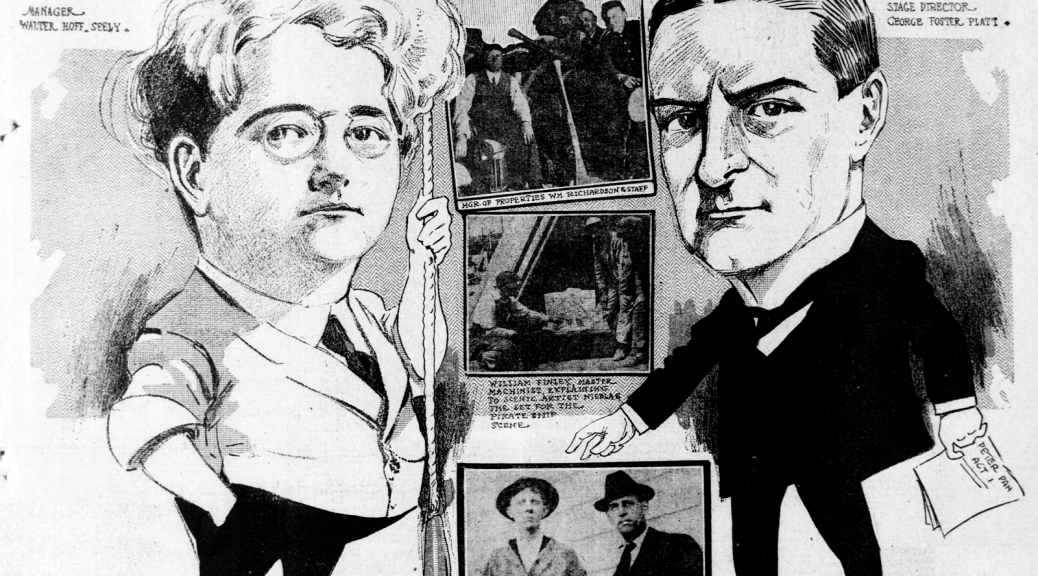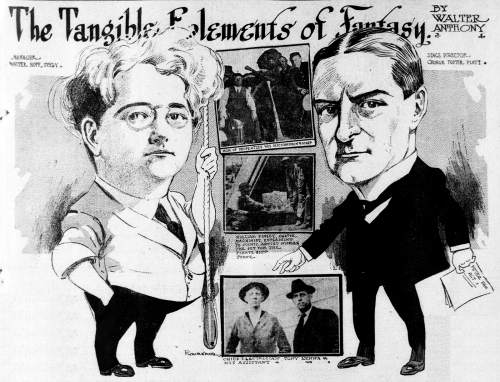The following occurred in 1835 and comes from a collection of stories about life on the stage. I find it notable in describing what a props run crew person was charged with, as well as revealing what the pay was for overhire on large shows:
A Strange Passage in my Life
by E. L. Blanchard
It had long been his earnest desire to obtain a practical knowledge of the mode of working stage machinery, and when an old friend of his family, Mr. William Bradwell, the ingenious theatrical mechanician, for many years associated with Covent Garden, proposed that he should be placed on the “property” staff of that establishment as a recipient of the nightly eighteenpence paid to extra hands during the run of spectacular pieces, the offer was eagerly accepted. Throwing in such trifling literary services as a couplet or a comic song for a pantomime, and occasionally assisting in the authorship of a playbill, the duties I had to discharge in this department were neither irksome nor unpleasant.
The distribution of banners, shields, and spears was committed to my charge, and when “Macbeth” was played, I had to count out the exact number of branches required for Birnam Wood to come to Dunsinane, and to see that the forest sent on by human instalments was duly returned and stacked, when the scene was over, in its accustomed corner.
When it was necessary for the evil demon to go below, it was my hand that gave the signal for the trap to descend, and the match to be applied to the pan of red fire; and, when the good fairy had to be despatched on some benevolent mission above, mine were the arms ready to receive her in the flies, and respectfully enfold the waist that had to be unhooked from the strong hold of the “traveller.”
When the revolving pillars of the ascending temple, used in the melodramatic romance of “Aladdin,” produced such a pretty effect, that a round of applause was sure to follow, I felt, as the invisible promoter of this peaceful revolution, bound to acknowledge the complement with an unseen bow. When the radiating star opened in the first scene of “The Bronze Horse,” to inspire by an encouraging dream the slumbering Zamna, Prince of China—represented by Mr. John Collins, uneasily reclining on a most uncomfortable mossy bank in the foreground, and usually grumbling during his supposed sleep about calico flowers being nailed to his couch with sharp tin tacks, placed the wrong way—mine was the hand giving movement to the complicated mechanism.
When Claude Frollo was flung by Quasimodo from the Tower of Notre Dame, it was my mission to hurl through the window the substituted dummy, and my misery to learn that a left-handed deputy, appointed one evening, had sent the stuffed figure through the wrong window, and pitched it into the middle of the pit, among a crowd of amazed spectators, who, after nursing the tattered effigy for awhile in a seemingly affectionate manner, returned it with such force across the footlights, that it fairly knocked down Mr. Henry Wallack, who entered at that moment as Quasimodo, and sent the Esmeralda, Miss Vincent, into such a fit of irrepressible laughter, that it became necessary to ring the curtain down as speedily as possible.
Scott, Clement. Stories of the Stage. London: G. Routledge, 1881. 22-23. Google Books. 25 Oct. 2007. Web. 2 May 2017. <https://books.google.com/books?id=TRgOAAAAQAAJ>.


